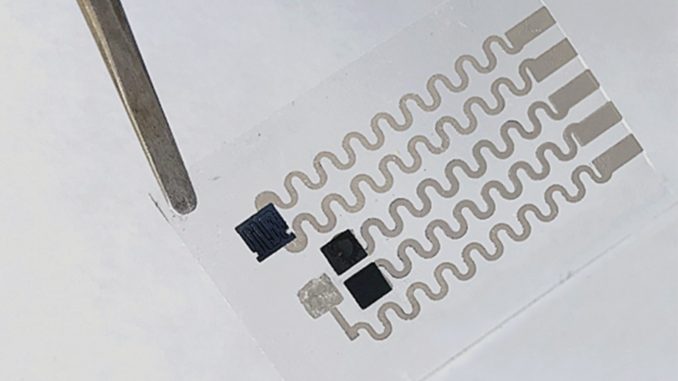
By Brian Blum
It’s long been a staple of science fiction to mock the simple suture as outdated. And why not — the wound-closure technique has been in use for at least 5,000 years.
Professor Hossam Haick’s chemical engineering lab at the Technion Israel Institute of Technology has created a smart suture-less dressing that binds the edges of a wound together, wards off infection, and even digitally reports on the wound’s condition to the surgeon.
The dressing would be applied to the area before a surgical incision is made. Following the surgery, the two ends of the wound bind together within three seconds.
The dressing can release antibiotics to help prevent infection, and it is connected wirelessly to the medical team’s smart devices. The smart dressing can deliver real-time reports on changes in temperature, pH and glucose levels.
Haick says he came up with the idea late one night after “watching a movie on futuristic robotics with my kids. I thought, what if we could really make self-repairing sensors?”
He got to work on his idea the next day. But there was a problem: The sensor was not biocompatible, meaning that it couldn’t be used in contact with skin and blood.

Creating a polymer that would be both biocompatible and self-healing was achieved by Haick’s postdoctoral student Ning Tang.
Tang’s polymer is like a molecular zipper made from sulfur and nitrogen. The surgeon’s scalpel opens it, then when pressed together, it closes and holds fast. Integrated carbon nanotubes provide electric conductivity and integrate the sensor array.
In lab experiments, wounds closed with the smart dressing healed as fast as those closed with sutures. Moreover, they showed reduced rates of infection.
“We’ve introduced the advances of the fourth industrial revolution – smart interconnected devices,” Haick says. “It’s a new approach to wound treatment.”
He said the technology is now patented.
“We have started discussions with a few agencies towards bringing this technology to the market.”
Haick is a prolific inventor. In 2013 he developed Na-Nose, a device that can detect various cancers through a simple in-office breath test. Patients breathe into a tube; the Na-Nose analyzes the more than 1,000 different gases that are contained in the breath to identify those that may indicate that something’s wrong. It works by binding gases to specific nano-materials.
Next came “e-skin” and wearable health monitors.
He also developed the A-Patch, a skin sticker that can diagnose tuberculosis. This was developed in Haick’s lab and supported by the Bill and Melinda Gates Foundation. The invention is described in the journal Advanced Materials.
Produced in association with Israel21C.
The post A Smart Polymer That Would Heal Wounds Without Sutures appeared first on Zenger News.
